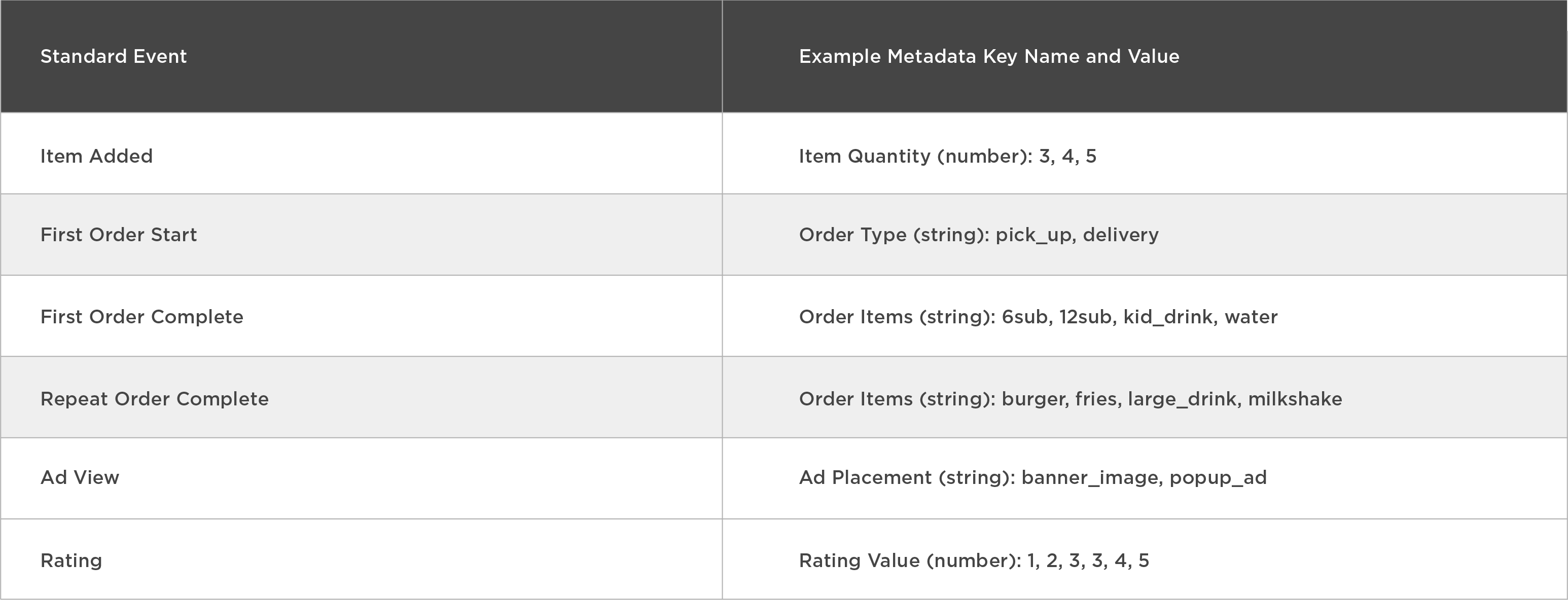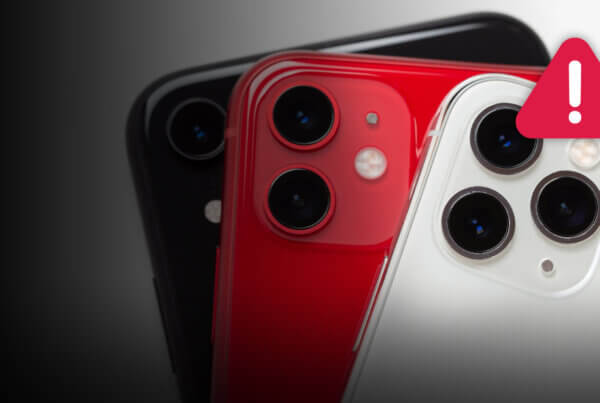Increase your app users through event development and optimization
Quick-service restaurants (QSRs) are getting quicker. Food ordering apps have streamlined the food-to-customer process by allowing users to make orders at any time from any location. The accessibility of QSR apps has made them a popular tool among restaurants and customers alike.
If you’re a QSR that already has an app, or if you’re looking to develop an app for your restaurant, follow these tips to establish a measurement strategy to gain valuable insights into your app users and optimize your marketing efforts.

1 – Communicate Between Marketers and Developers
Before establishing a measurement strategy, ensure there is clear communication between marketers and app developers so that each team knows the needs and expectations of the other. Marketers should figure out what information will be the most important to measure while developers should listen to the needs of the marketer and communicate to them what can be accomplished within the timeframe.
Both marketers and developers should collaborate on what in-app events to include, and how they are named so that it is easier to know what data is mapped to each event. Creating naming conventions for events and other data points will make the information easier to analyze.
2 – Configure Insightful Events
Most QSR apps follow a similar structure. They include a list of items that can be purchased in the app and the option to either pick up the order or get it delivered to a selected location. Each action the user completes within the app can be measured. These post-install events allow marketers to gather information that can be used to calculate a user’s lifetime value (LTV) by measuring their journey through the app.
Within the Kochava platform, almost any in-app activity can be passed as an event. When creating these events, marketers should decide which steps in the engagement funnel will derive the most insights and create events accordingly.
Most quick-service restaurants will measure similar events. Consider integrating the following events into your app to gain insightful measurement data.
- Item Added – This event is triggered when a user adds an item to an order.
- First Order Start – This event is triggered when a user initiates their first order in the app but has yet to complete it.
- First Order Complete – This event is triggered when a user successfully completes checkout on their first order in the app.
- Repeat Order Start – This event is triggered when a user begins a repeat order but has yet to complete it.
- Repeat Order Complete – This event is triggered when a user completes a repeat order in the app.
- Ad View – This event is triggered when an ad is served to the user within the app.
- Rating – This event is triggered when a user rates the app.
In addition to the standard events, it’s beneficial to add custom events too to drive users further into the funnel. Custom events could include:
- View Item – This event is triggered when a user views an item on the menu.
- Sign-Up – This event is triggered when a user signs up or registers in the app.
- Sign-In – This event is triggered whenever a user signs into the app.
- Choose Location – This event is triggered when a user chooses their location/store where they will pick up their order.
These are just examples of custom events that a QSR app could implement. If your app has unique features that you would like to measure, feel free to create more custom events.
3 – Include Metadata
Take events to the next level by passing rich metadata along with them. For each event, more information can be gathered. Instead of only knowing if an order was made or not, with additional metadata, know the name of each item ordered, the price of the item(s), and other event-specific information.
For example, a QSR app might have a range of drink sizes: small, medium, large, x-large. By passing metadata, you might find out that most users order medium drinks with burgers but only small drinks with any other purchase. With this information, you can create a marketing campaign that offers a deal on burgers in the hopes of gaining more medium drink purchases.
For each standard event, there are a number of metadata points that can be configured, including:

With all of this added data, marketers can gather more granular detail on each event they configure. Custom events can also pass metadata. For more information on what data can be utilized, read the support documentation here.
4 – Naming Events and Metadata
With so many data points, it is important to name each event with titles that are easy to understand. Events should be titled with the user action they represent, and the metadata key names under each event should clearly state what data is being passed. For example:

5 – Optimize for Repeat Customers
Once all the events are created and you start gathering data, you can analyze the information to see install to event completion across all of your app users. Questions will arise such as:
- Are first-time customers coming back into the app and ordering again? How often?
- What QSR location(s) get the most order pick-ups and which ones get the most deliveries?
- Are most orders made from guest users or registered users?
By answering these questions, you can start optimizing your app growth campaigns to increase first-time orders from new users and build a solid foundation of repeat customers. If your users only made one order since they installed the app, you can test to see if the process of adding items to an order is too difficult or if the delivery cost is too high. You can also create audiences from users who never complete an order after a certain point and reengage them with relevant content through push notifications, ads, email, or in-app promotions.
Conclusion
QSRs have modified and optimized their in-store processes for maximum efficiency. Now it’s time to modify and optimize the in-app processes. By creating and measuring in-app events as well as passing rich metadata with every event, marketers can get a better understanding of how their users move through the app, see what is working and see what needs improvement.
Learn more about how Kochava can help establish a measurement strategy for your QSR app by contacting us at support@kochava.com or visiting kochava.com.





